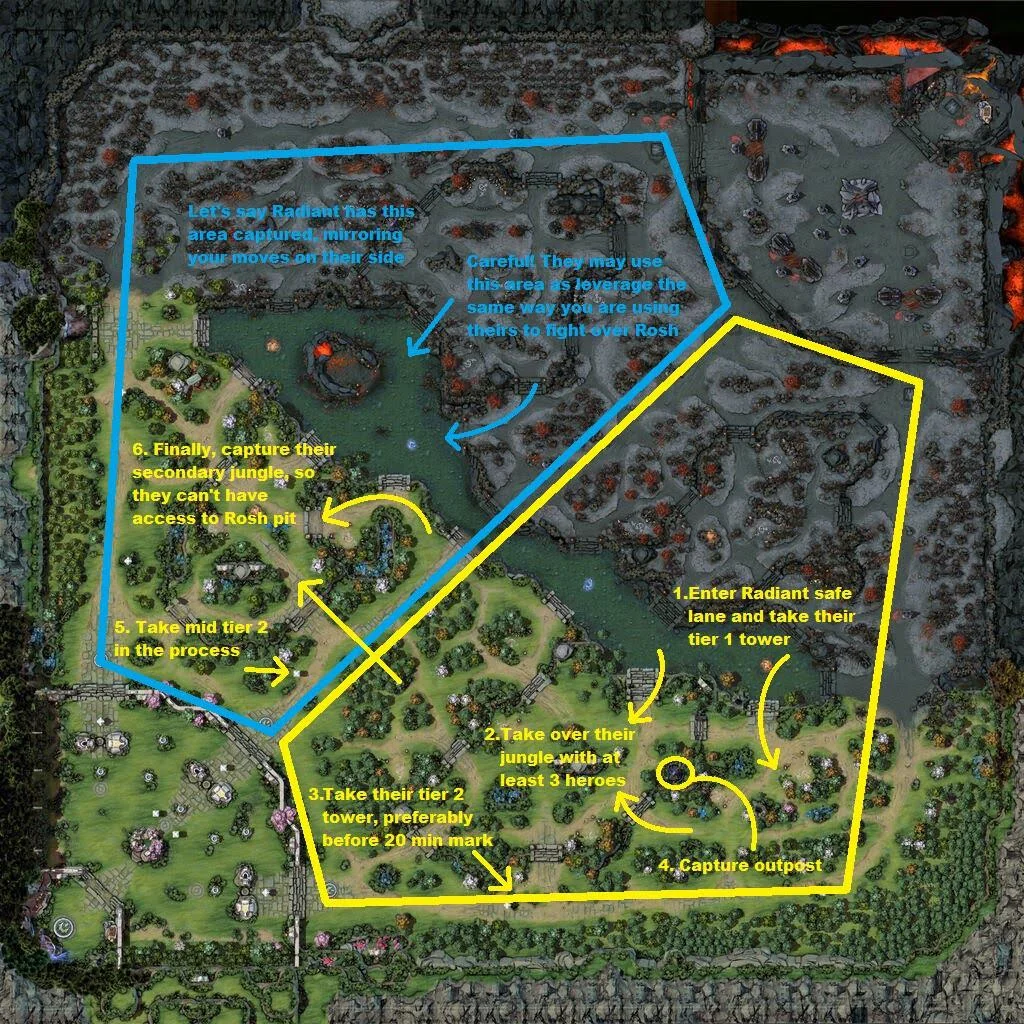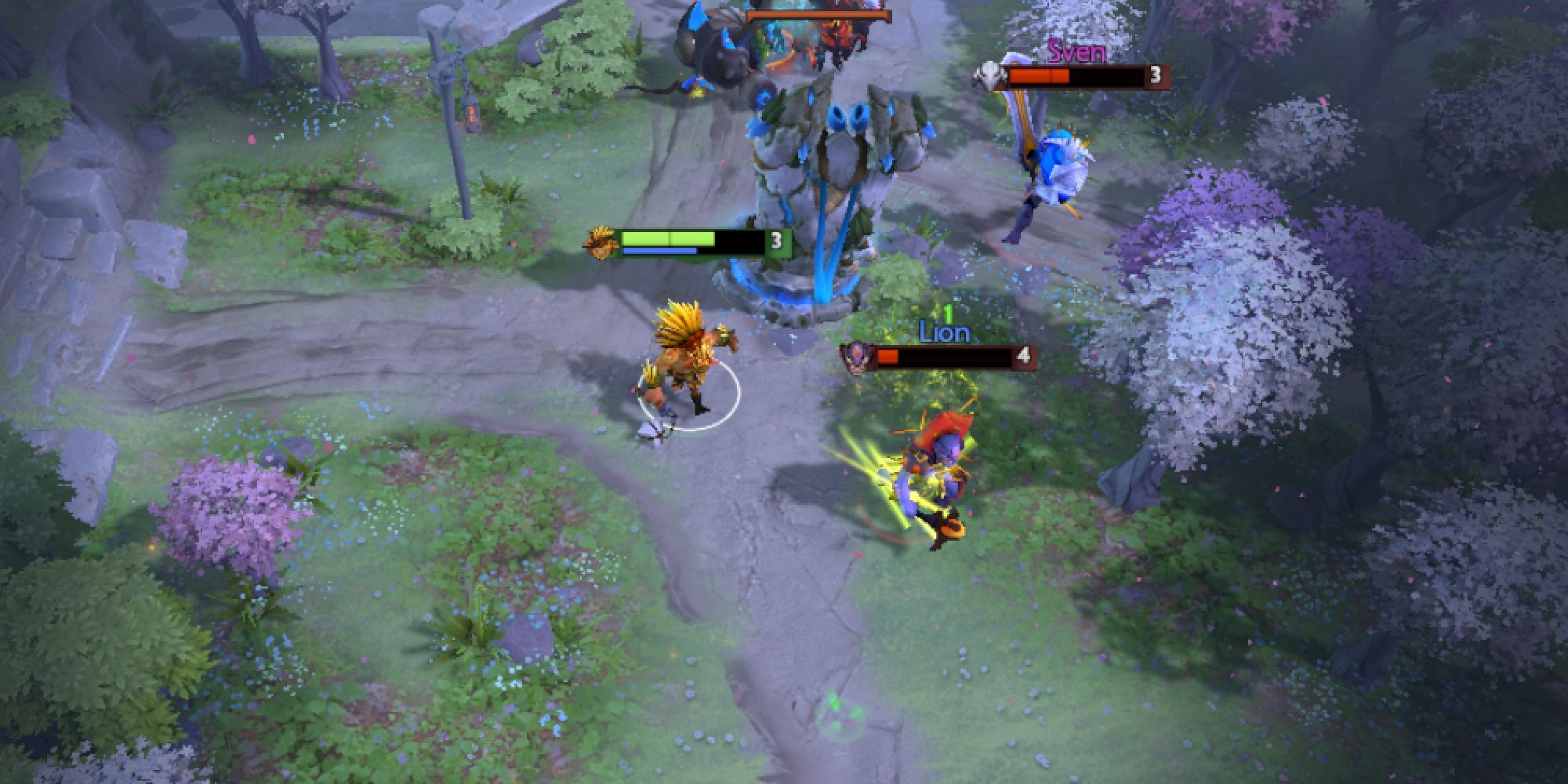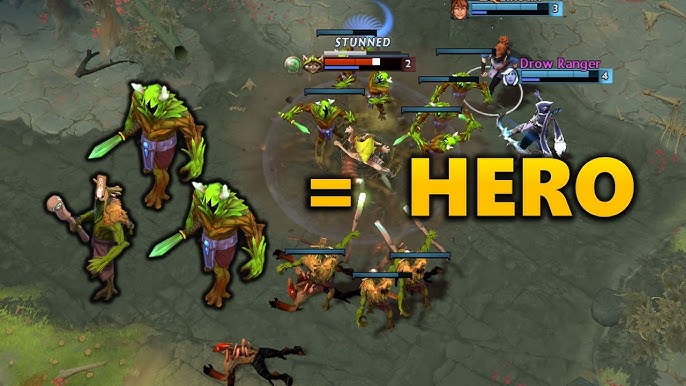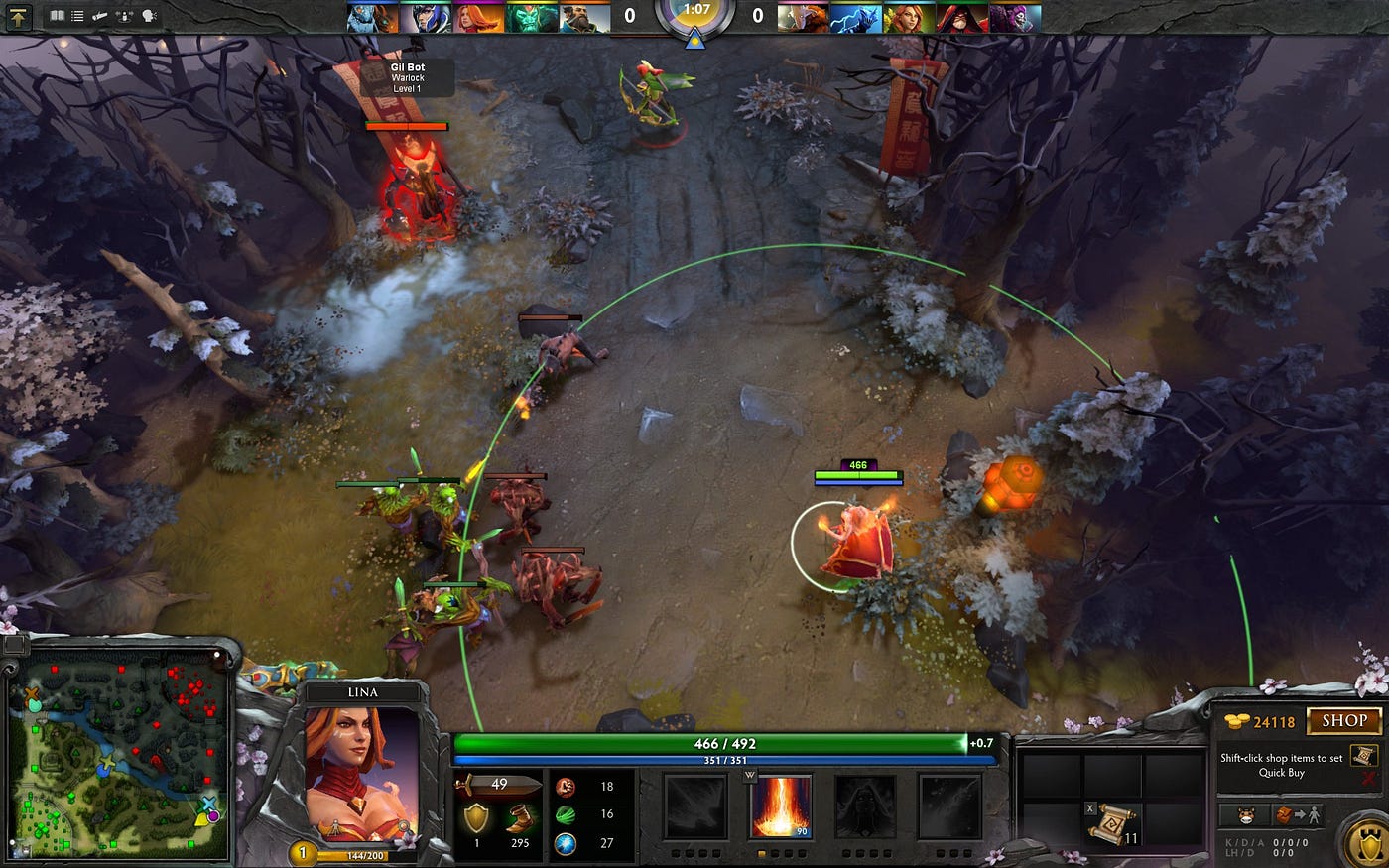
Lane Control Guide in Dota 2 for Beginners

In Dota 2, lane control is one of the most important but often overlooked skills, especially for beginners. Understanding how to manipulate the creep wave, maintain lane equilibrium, and pressure your opponent properly can be the difference between a successful laning phase and a disastrous one. Whether you’re playing core or support, mastering lane control can elevate your gameplay significantly.
This guide will cover the core principles of lane control for new players, including creep aggro, equilibrium, pulling, stacking, and zoning.
1. What is Lane Control?

Lane control refers to your ability to manipulate where and how the creep wave behaves, which in turn dictates:
• Where fights occur
• How safely you can farm
• How much pressure you apply to your opponent
Proper lane control allows you to deny farm, gain XP advantages, and even set up kills without necessarily relying on ganks.
2. Understand Lane Equilibrium

Lane equilibrium is where the two creep waves meet and fight. Ideally, you want the equilibrium to remain near your tower but not under it—this allows you to farm safely while threatening your opponent.
Tips to maintain equilibrium:
• Last-hit only: Avoid auto-attacking creeps unnecessarily.
• If your creeps are pushing, deny your own creeps to slow the push.
• If needed, tank the creep wave and drag it backward slightly to reset equilibrium.
3. Creep Aggro: A Fundamental Mechanic

Creep aggro is a mechanic that allows you to manipulate where creeps go by attacking or right-clicking an enemy hero near the creep wave.
How to use it:
• Hold the “A” key or right-click an enemy hero while standing near their creeps. This will aggro the ranged creeps onto you temporarily.
• Use this to pull creeps closer to your tower or to prevent your wave from pushing.
Advanced players use this constantly to control lane equilibrium to perfection. Practice it in bot matches to build muscle memory.
4. Denying: Starving Your Enemy
In Dota 2, you can deny your own creeps once their HP falls below 50%. Denying a creep gives:
• Reduced XP to your opponent
• Better control over lane equilibrium
Make it a habit to time your denies in between last hits. Range creeps are most valuable, so prioritize them.
5. Pulling Creep Waves (Support Tip)
If you’re playing as a support, pulling neutral creeps to your lane is a vital technique to reset equilibrium.
How to do it:
• Pull the small neutral camp (e.g., at 15 or 45 seconds) toward your lane creeps.
• This causes your wave to fight the neutral creeps, often delaying or removing the push.
If done correctly, pulling denies XP to your enemies and pulls the wave closer to your tower.
6. Stacking Neutral Camps
Another related skill is stacking neutral camps, which helps cores farm more efficiently later.
How to stack:
• Attack a neutral camp just before the minute mark (e.g., 0:53–0:55).
• This will cause the creeps to chase you, and a new group will spawn when the clock hits the next minute.
Supports can use downtime between pulls to stack camps for their cores.
7. Zoning the Enemy Offlaner
Zoning refers to harassing the enemy offlaner to prevent them from safely farming or gaining experience.
Best practices:
• Trade hits wisely—stand near your ranged creep to avoid aggro.
• Use ranged attacks or spells to harass when they go for last hits.
• Don’t overextend—if your equilibrium is good, the wave will do the zoning for you.
8. Understanding Lane Matchups
Different hero matchups dictate how aggressive or passive you should be:
• Against melee heroes, use range to your advantage to poke and zone.
• Against kill lanes, focus on maintaining equilibrium and keeping distance.
• In dual offlane situations, prioritize survivability and XP over harassing.
Knowing when to play safe or apply pressure is key to making smart decisions.
9. When to Push the Lane
Sometimes, it’s strategic to push the lane intentionally:
• To secure runes (especially at 2 or 4 minutes).
• When rotating or preparing for a pull.
• If you kill the enemy laner and want to deny him gold/XP.
Pushing a wave before you leave lane forces your creeps to hit the tower and reset equilibrium naturally.
10. Practice Makes Perfect
Lane control isn’t just theory—you have to practice it. Spend time watching pro replays or streamers and observe how they:
• Keep the wave balanced
• Aggro creeps smartly
• Pull and deny efficiently
Try using unranked matches or bot games to experiment with lane manipulation without pressure.
Final Thoughts
Good lane control turns you from a passive farmer into an active controller of the game. Whether you’re a carry, offlaner, or support, knowing how to manipulate the creep wave is a powerful tool to:
• Starve enemies
• Farm faster
• Secure early game leads
For beginners, it might feel overwhelming, but once you internalize these basics, Dota 2 becomes a much more strategic and rewarding experience.







